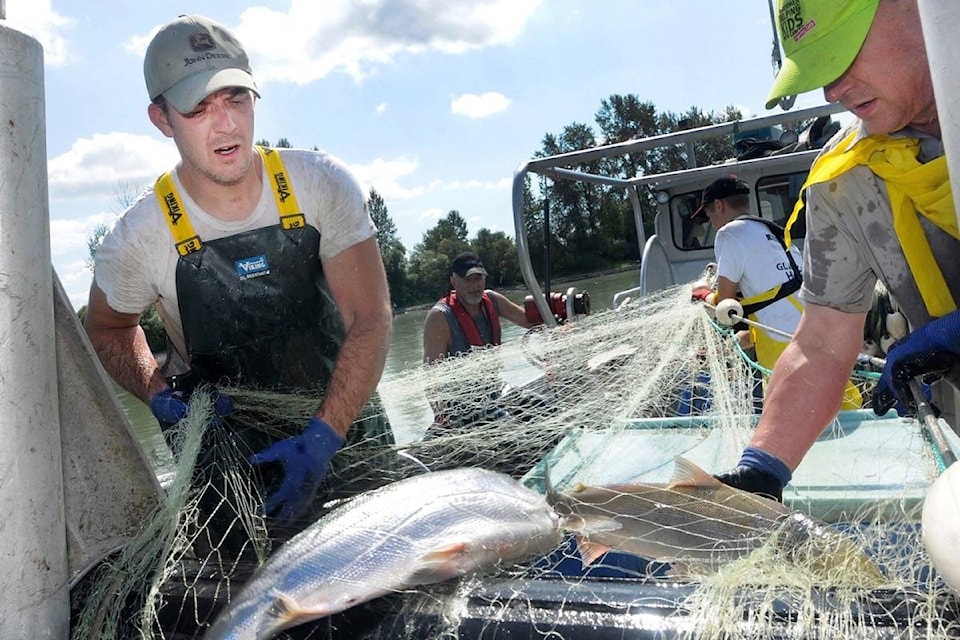A group of 25 Fraser River First Nations said they aren’t getting their fair share of sockeye salmon, and it isn’t because there is a shortage of fish.
They predict they will come up short by more than 56,000 fish, or roughly one-fifth of the 300,000 that were allocated to First Nations located between the Port Mann Bridge and the community of Yale for food, social and ceremonial (FSC) purposes.
The Agassiz-based Harrison Fisheries Authority, consisting of Sts’ailes and Scowlitz First Nations, expects to fall short by 7,632 sockeye, while the remaining 23 Nations in the Lower Fraser region will take home 48,976 fewer fish than expected.
“Our sockeye fishery this summer was one closure after another,” said Sts’ailes Chief Ralph Leon.
“Even the commercial sockeye allocation we bought got fished before we could get at it.”
A statement issued by the 25 said DFO didn’t give them enough days to catch sockeye at the beginning of the run, and waited too long to grant additional days.
By the time they were allowed to catch sockeye again in September, the 25 First Nations groups said the coho salmon run was underway, which required the use of less efficient and more expensive beach seines to avoid bycatch.
The more selective beach seines require “two to three vessels, large storage totes, and a crew of 10 or more” the statement said, and nets can cost as much as $5,000 each.
And because beach seines are confined to gravel reach areas from the Chilliwack area to Hope, about a third of the First Nations in the Lower Fraser can’t take part simply because of their location, they said.
They complain that DFO allowed recreational and commercial salmon fishing to take place while the First Nations were trying to get more days for FSC catches.
The statement said with an estimated return of approximately 10 million sockeye salmon this year, the shortage isn’t because of not a lack of sockeye. In fact, 2018 was expected to be a high-peak year.
It added many First Nations were planning to not only process and store their allotted catch for the year but were also preparing for subsequent years when the run sizes are expected to be poor, or no targeted sockeye fisheries are allowed.
The Times has reached out to DFO for comment.
READ ALSO: B.C. sockeye salmon run creates a beautiful spectacle
dan.ferguson@langleytimes.com
Like us on Facebook and follow us on Twitter
